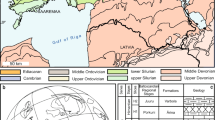Abstract
Most living mammal orders, including our own, started their career during the first 10 million years of the Cenozoic, the Age of Mammals. The fossil record documents that early Paleogene adaptive radiations of various clades included tiny species of the size of living shrews. Remains of particularly diminutive limb bones are described from the late Paleocene site of Walbeck, Sachsen-Anhalt. Discovered in 1939, it has remained the only known Paleocene mammal-bearing locality from Germany. The remains are referred to the family Adapisoriculidae, which is considered on the basis of the present postcranial evidence to represent plesiadapiform primates rather than alleged lipotyphlan insectivores as previously proposed. The Walbeck fossils compete with the Early Eocene species Toliapina vinealis from Europe and Picromomys petersonorum from North America for the status of the smallest known primate, fossil and living. Their estimated body weights are as small as 10 g. The limb bones show features related to enhanced flexion at the elbow and hip joint, suggesting arboreal habits and environments such as terminal branches. The diminutive size and tooth morphology suggest feeding on small insects and other invertebrates. Postcranials are important to assess early radiations, such tiny specimens as the present ones are extremely scarce in the fossil record, however.

Similar content being viewed by others
References
Beard KC (1993) Phylogenetic systematics of the Primatomorpha, with special reference to Dermoptera. In: Szalay FS, Novacek MJ, McKenna MC (eds) Mammal phylogeny. Placentals. Springer, New York, p 129–150
Bloch JI, Boyer DM (2007) New skeletons of Paleocene-Eocene Plesiadapiformes: A diversity of arboreal positional behaviors in early primates. In: Ravosa MJ, Dagosto M (eds) Primate origins: Adaptations and evolution. In: Developments in primatology: Progress and prospects. Springer, New York, pp 535–581
Bloch JI, Silcox MT, Boyer DM, Sargis EJ (2007) New Paleocene skeletons and the relationship of plesiadapiforms to crown-clade primates. PNAS 104:1159–1164
Conroy GC (1987) Problems of body-weight estimation in fossil primates. Internat J Primat 8:115–137
Fleagle JG (1999) Primate adaptation and evolution, 2nd edn. Academic, San Diego
Gebo DL, Dagosto M, Beard KC, Qi T (2000) The smallest primates. J Human Evol 38:585–594
Gheerbrant E (1995) Les mammifères Paléocènes du Bssin d’Ouarzazate (Maroc). III. Adapisoriculidae et autres mammifères (Carnivora; ?Creodonta, Condylarthra, ? Ungulata et incertae sedis). Palaeontographica A 237:39–132
Gheerbrant E, Russell DE (1989) Presence of the genus Afrodon (Mammalia, Lipotyphla (ß), Adapisoriculidae) in Europe; new data for the problem of trans-Tethyan relations between Africa and Europe around the K/T boundary. Palaeogeogr Palaeoclim Palaeoecol 76:1–15
Gheerbrant E, Russell DE (1991) Bustylus cernaysi nov. gen., nov. sp., nouvel Adapisoriculidé (Mammalia, Eutheria) Paléocène d’Europe. Geobios 24:467–481
Gingerich PD (1976) Cranial anatomy and evolution of early Tertiary Plesiadapidae (Mammalia, Primates). Papers Paleont Mus Paleont Univ Michigan 15:1–141
Hooker JJ, Russell DE, Phélizon Al (1999) A new family of Plesiadapiformes (Mammalia) from the Old World lower Paleogene. Palaeontology 42:377–407
McKenna MC, Bell SK (1997) Classification of mammals above the species level. Columbia University Press, New York
Niethammer J, Krapp F (eds) (1990) Handbuch der Säugetiere Europas, 3/1. Aula Verlag, Wiesbaden
Ravosa MJ, Dagosto M (2007) Primate origins: Adaptations and evolution. In: Developments in primatology: Progress and prospects. Springer, New York
Rose KD (2006) The beginnings of the Age of Mammals. Johns Hopkins University Press, Baltimore
Rose KD, Bown TM (1996) A new plesiadapiform (Mammalia: Plesiadapiformes) from the Early Eocene of the Bighorn Basin, Wyoming. Ann Carnegie Mus 65:305–321
Rose KD, Beard KC, Houde P (1993) Exceptional new dentitions of the diminutive plesiadapiforms Tinimomys and Niptomomys (Mammalia), with comments on the upper incisors of Plesiadapiformes. Ann Carnegie Mus 62:351–361
Russell DE (1964) Les mammifères paléocènes d’Europe. Mém Mus Nat Hist Natur, Sér C 13:1–324
Russell DE (1975) Paleoecology of the Paleocene–Eocene Transition in Europe. In: Szalay FS (ed) Approaches to primate paleobiology. Contr Primat 5:28–61
Silcox MT (2001) A phylogenetic analysis of the Plesiadapifomes and their relationship to Euprimates and other archontans. Diss Johns Hopkins Univ, Baltimore, 752 pp.
Silcox MT, Bloch JI, Sargis EJ, Boyer DM (2005) Euarchonta (Dermoptera, Scandentia, Primates). In: Rose KD, Archibald JD (eds) The rise of placental mammals. Johns Hopkins University Press, Baltimore London, pp 127–144
Weigelt J (1939) Die Aufdeckung der bisher ältesten tertären Säugetierfauna Deutschlands. Nova Acta Leopoldina NF 7:515–528
Weigelt J (1940) Die Entdeckung paleozäner Säugetiere im deutschen Heimatboden. Naturwissenschaften 28:620–623
Weigelt J (1960) Die Arctocyoniden von Walbeck. Freiberger Forschungshefte C 77:1–241
Acknowledgements
I am grateful to Hartmut Haubold and Norbert Hauschke (University of Halle-Wittenberg) for making the specimens available for study. I extend my gratitude to three anonymous reviewers whose comments on an earlier version of the manuscript led to many improvements. Thanks are also due to Thierry Smith (Institut royal des Sciences naturelles de Belgique) for calling my attention to a recent paper. I thank Sven Tränkner and Katrin Krohmann from Senckenberg for photographic support.
Author information
Authors and Affiliations
Corresponding author
Rights and permissions
About this article
Cite this article
Storch, G. Skeletal remains of a diminutive primate from the Paleocene of Germany. Naturwissenschaften 95, 927–930 (2008). https://doi.org/10.1007/s00114-008-0401-0
Received:
Revised:
Accepted:
Published:
Issue Date:
DOI: https://doi.org/10.1007/s00114-008-0401-0




